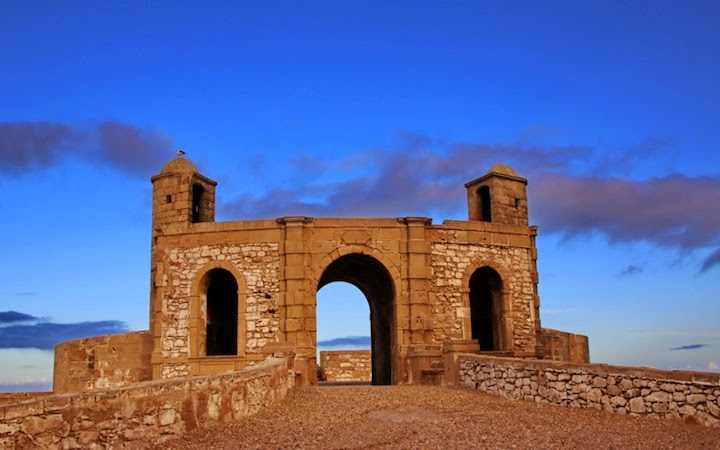20 reasons to visit Morocco
🌟 Discover Morocco’s Hidden Gems: Boutique Retreats, Desert Adventures & Mountain Escapes
Morocco is a land of contrasts—where ancient traditions meet modern luxury, and vibrant cities blend seamlessly with serene landscapes. Whether you're seeking a tranquil mountain retreat, an exhilarating desert adventure, or a cultural city escape, Morocco offers something for every traveler. Here's a curated guide to some of the country's most exciting new experiences and destinations.
🏙️ Urban Escapes: Cities with Character
Casablanca
Known for its Art Deco architecture, Casablanca is emerging as a chic destination. Architectural enthusiasts will appreciate the 1930s Cathedrale Sacre-Coeur and the palm-lined Boulevard d'Anfa. For a unique stay, consider Jnane Sherazade, a villa-turned-boutique hotel featuring a garden and its own hammam.
Fez
As Morocco's spiritual and cultural hub, Fez boasts a labyrinthine medina filled with palaces, mosques, and madrasas. Stay at Dar Seffarine, a 600-year-old guesthouse offering a sociable atmosphere and a stunning roof terrace.
Marrakesh
The Angsana Riads Collection, owned by Asia's luxury Banyan Tree Group, has expanded with Riad Zaouia. This new addition brings the total number of riads to eight, offering Arabian Nights evenings with Moroccan buffets and entertainment.
Tangier
Once a haven for artists and writers, Tangier is undergoing a transformation into a chic destination. With boutique hotels like Dar Jameel and Hotel Nord-Pinus Tanger, the city offers a blend of old-world charm and modern luxury. Visit in late May for the Tangier Jazz Festival, featuring regional and international artists.
🏞️ Mountain Retreats: Serenity in the High Atlas
Kasbah Tamadot
Sir Richard Branson's retreat in the Atlas Mountains has added six luxurious Berber tented suites with private plunge pools. Set on a hillside, the complex features winding paths, open courtyards, indoor and outdoor pools, tennis courts, a spa, and the Kanoun restaurant with a rooftop terrace for dining under the stars.
Kasbah Bab Ourika
Opening in December, this new hotel on a hilltop in the Ourika Valley offers 360-degree views over the Atlas Mountains and traditional villages below. Built in Berber style, it features solar panels, organic locally sourced food, and plans for community projects in nearby schools and villages.
Ouirgane
Intrepid Travel's new Atlas Mountain Retreat offers a five-day trip staying in the Berber village of Ouirgane. Experience the simple way of life, explore the terrain with a local guide, enjoy traditional Moroccan cuisine, and unwind with a scrub and massage in the local hammam.
🏜️ Desert Adventures: Into the Sahara
Camel Trekking
Embark on a three-day, camel-supported trek into the remote Sahara with Explore's Moroccan Desert Adventure. Walk five hours a day, enjoy Berber cuisine, and sleep in tents or under the stars. The trip also includes a night in an auberge at Zagora and time in Ouarzazate, known as "Ozzywood" for its film studios.
Draa Valley
KE Adventure's 'Petits Caravanniers' trip offers a bilingual family trekking holiday, allowing children to brush up on their French language skills. Explore the Draa Valley with camels carrying equipment and tired children, camping by night and walking during the day.
La Pause
For a desert experience within easy reach of Marrakesh, La Pause offers Berber tents and traditionally-built mud and straw huts. The camp is lit by lanterns and candles, and activities include horse and camel riding, mountain biking, and desert golf.
🌊 Coastal Retreats: Seaside Serenity
Oualidia
This coastal town is home to La Sultana, a sand-colored palace built on the shore of a lagoon. The hotel features private hot tubs, an infinity pool, and a spa. Guests can enjoy oysters, the region's specialty, and a view of the hotel's private pier stretching out into the lagoon.
Taghazout
A laid-back fishing village near Agadir, Taghazout has been a surfing destination since the late 1960s. Surf Berbere is a British-run surf school with accommodation near Hash Point, one of the best point breaks in North Africa. In January and February, guests can swap their wetsuits for skis and head to Oukmedian for a couple of days' skiing.
🚂 Cultural Journeys: Exploring Morocco's Heritage
Train to Andalucía
Fly-Drive Discovery
Whether you're seeking adventure, relaxation, or cultural immersion, Morocco's diverse landscapes and experiences offer something for every traveler. From the bustling streets of its cities to the tranquil retreats in the mountains and deserts, Morocco invites you to explore its rich heritage and natural beauty.
































.jpeg)
.jpg)
.png)
.jpg)
.png)
.jpg)
.jpg)
.jpg)
.jpg)















